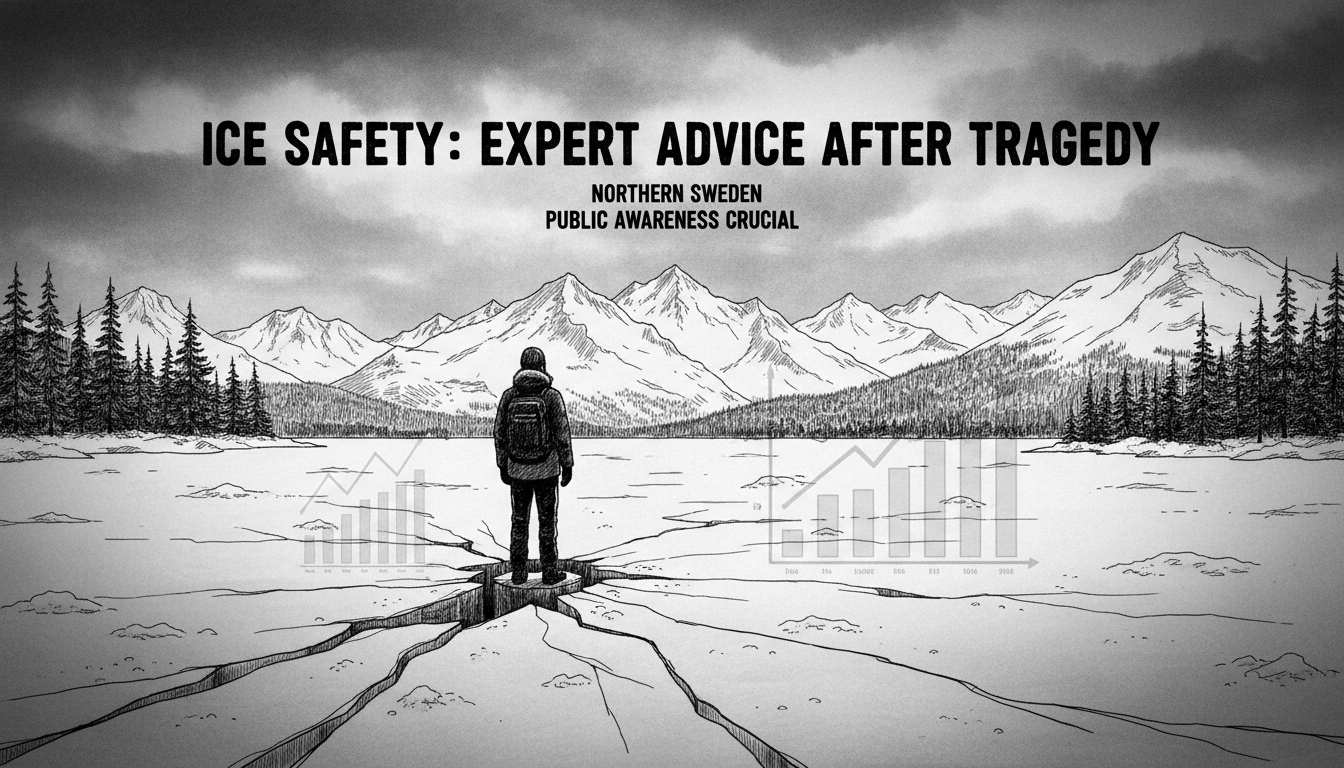A recent tragedy in northern Sweden has prompted urgent safety warnings from ice experts. A man in his seventies died in Kalix after falling through thin ice. The incident occurred as winter ice began forming along coastal communities in Norrbotten county.
Ari Hultqvist works with the outdoor recreation organization Friluftsfrämjandet and serves on Sweden's Ice Safety Council. The Luleå resident frequently travels long distances on ice skates. He emphasizes that early winter ice presents particular dangers.
Statistics from national safety authorities reveal sobering patterns. An average of twelve people die annually in ice-related accidents across Sweden. These tragedies occur when people walk, skate, ride snowmobiles, or engage in other activities on frozen waters.
The timing of this incident raises important questions about public awareness. Early winter often creates deceptive ice conditions that trap the unprepared. Many residents and visitors underestimate how quickly ice thickness can vary.
Northern Sweden's climate creates unique challenges for winter safety. The region experiences extreme temperature fluctuations that weaken ice unpredictably. Coastal areas face additional risks from tidal movements and changing water levels.
Local authorities typically conduct regular ice thickness measurements during winter months. They post warnings about unsafe areas and recommend minimum thickness for different activities. Yet personal responsibility remains crucial for safety.
Ice experts recommend several precautionary measures. Always check official ice thickness reports before venturing onto frozen surfaces. Carry ice picks around your neck for self-rescue. Never go onto ice alone. Wear a floating suit or life vest.
The psychological aspect of winter activities deserves attention too. Many Swedes grow up with winter traditions and develop overconfidence around frozen waters. This cultural familiarity sometimes leads to complacency about real dangers.
What practical steps can people take right now? Experts suggest waiting until ice reaches at least 10 centimeters thick for walking. Snowmobile riders need at least 15-20 centimeters. Clear blue ice proves strongest while white or gray ice indicates weakness.
Recent years have shown changing patterns in winter conditions. Climate variations affect how quickly lakes and coastal waters freeze. The traditional knowledge that guided previous generations may no longer suffice.
This tragedy serves as a sobering reminder for all Nordic residents and visitors. Winter's beauty conceals real dangers that demand respect and preparation. Safety protocols exist for clear reasons based on painful experience.
The broader Nordic region faces similar challenges each winter. Norway, Finland, and Denmark all record ice-related accidents despite strong safety cultures. This suggests a universal need for continued vigilance and education.
International visitors to Nordic countries require particular attention. Many come from climates without frozen lakes and lack experience judging ice safety. Tourism operators bear special responsibility for their safety.
What happens next in the affected community? Local authorities will likely increase safety messaging and monitoring. The tragedy may prompt renewed discussions about winter safety education in schools and public awareness campaigns.
The fundamental reality remains unchanged. Nature demands respect regardless of human experience or technology. Proper preparation and caution make the difference between enjoying winter wonders and facing tragedy.

